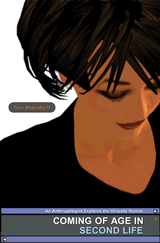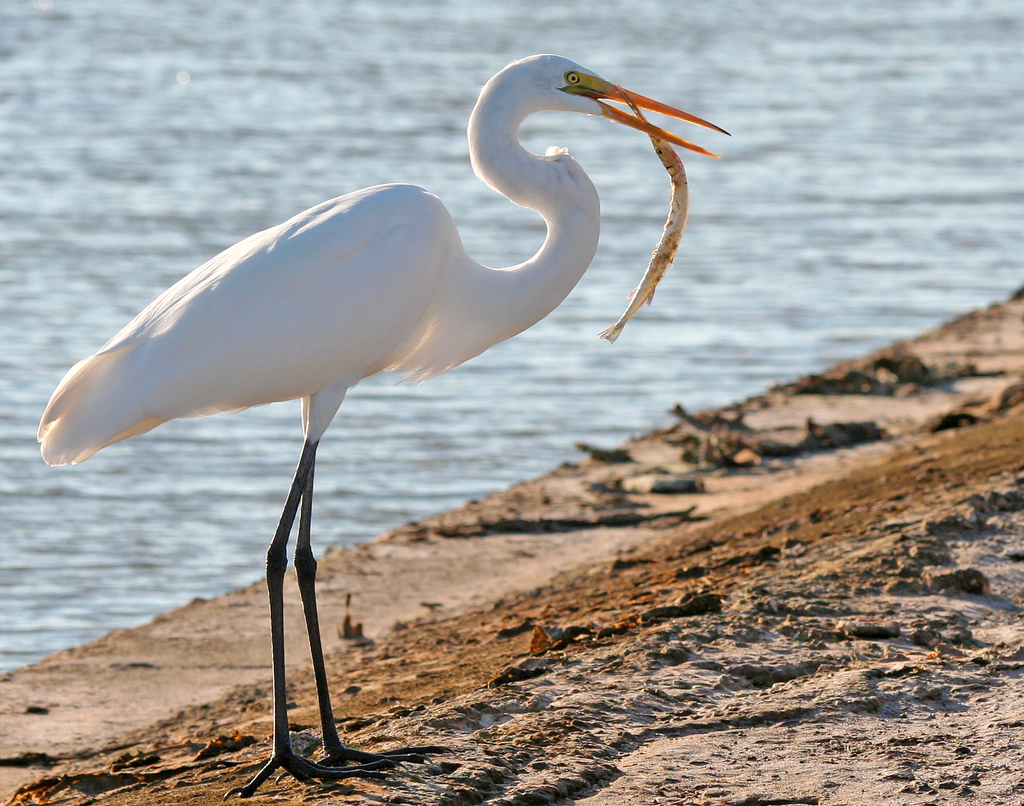In this time of far-reaching legal reform in China, you might be interested in subscribing to the Stanford Law China Guiding Cases Project updates - https://mailman.stanford.edu/mailman/listinfo/chinaguidingcasesproject (https://cgc.law.stanford.edu/) - which we talked about over dinner on Friday, Chen.
Chen and Nelson, here are two blog posts of mine from yesterday and today outlining planing an (MIT OCW-centric) course on "The Anthropology of Virtual Reality: Building a Field Site for Ethno-Wiki-Virtual-World-Graphy" (and possibly as touristic destinations in Google Cardboard headset for example) -
Chen and Yindong, shall we explore developing this course for eventual academic credit at World University and School in both English and Mandarin Chinese (http://ocw.mit.edu/courses/translated-courses/)?
More about China World University and School later.
Regards,
Scott
*
As a professor of Anthropology and Sociology, and in planning for teaching my course entitled -
"The Anthropology of Harbin Hot Springs, Tourism Studies and Virtual Reality: Students building their own ethno-wiki-virtual-world-graphy interpretations of Harbin"(http://scott-macleod.blogspot.com/2016/05/cattle-egret-as-professor-of.html) -
I'd like to develop a variant of this course entitled:
"The Anthropology of Field Sites and Virtual Reality: Making your own virtual STEM field site"
I'd like for students to be able to build with information technologies, including for graduate students to create their own STEM ethnographic field site, probably in Google Street View / Maps / Earth centric to begin (but adding the build-ability of OpenSim/SL), and perhaps beginning with beginning a wiki Subject page at WUaS in their main language -
http://worlduniversity.wikia.com/wiki/Subjects - but emerging from Wikidata and with language translation possibilities especially.
1
Create a subject you'd like to teach or facilitate, and as an academic wiki page for your field site -
http://worlduniversity.wikia.com/wiki/Subjects
2
Add a photo or video to Google Street View-
Publish Street View -
https://www.google.com/maps/streetview/publish/
See it in Google Maps -
https://www.google.com/maps/@35.6594466,139.7002501,3a,75y,306.41h,100.68t/data=!3m7!1e1!3m5!1sGu-yA64rvskAAAQfCRbuwg!2e0!3e11!7i11700!8i5850
3
Develop a blog in Blogger (https://www.blogger.com/home) or Word Press (https://wordpress.com), for example, and write a paragraph daily about your discoveries and how they relate to the readings
4
Develop a beginning web site in html for your research and add your wiki subject page to this (e.g. with these - http://www.beautifullife.info/web-design/15-best-free-website-builders/)
5
(WUaS would like to plan for the following virtual world installations to become as easy as publishing a photo to Street View)
Install Open Sim -
http://opensimulator.org/wiki/Download
How to Install OpenSim in 10 min
https://www.youtube.com/watch?v=HvvYyIgU1bI
Open Simulator 1 - Install OpenSim and Imprudence Viewer
https://www.youtube.com/watch?v=WX9z4Ls4pdA
(or download SL - https://secondlife.com/support/downloads/)
(Merge OpenSim with Google Maps - this is a huge project and hopefully Google, for example, with their ecosystem will make this much easier)
6
Create your own field site (e.g. virtual Harbin, a village in India, an research station in Antartica for modeling ice shelf melting 200 meters below, 5 decades of excavating Troy with video from each decade) -
in OpenSim
7
Create your avatar researcher in Google Street View / OpenSim
8
Build something with Scratch Programming Language in Street View / OpenSim / SL with your avatar
http://web.mit.edu/~eric_r/Public/S4SL/
9
Meet with friends on your field site to grow community
10
Develop your own ethno-wiki-virtual-world-graphy practices with the above
11
a machine learning ethno-wiki-virtual-world-graphy project
12
a machine ethno-wiki-virtual-world-graphy translation project
13
a brainwave headset project
14-15
In the remaining weeks, write a 20 page academic paper (with a thesis) to be published in an academic journal in your discipline, for example, here - http://worlduniversity.wikia.com/wiki/Academic_Journals_at_WUaS
*
Develop an undergraduate course out of this as well.
*
RE my "Cattle egret: As a professor of Anthropology and Sociology at startup WUaS and exploring how I'd teach a course entitled "The Anthropology of Harbin Hot Springs, Tourism Studies and Virtual Reality: Students building their own ethno-wiki-virtual-world-graphy interpretations of Harbin" ..." blog post yesterday -
- I'll intersperse readings chapter by chapter and week by week from CoAiSL (this summary is by John Postill):
Summary of Boellstorff (2008), Coming of Age in Second Life
JULY 13, 2009

Boellstorff, T. 2008. Coming of Age in Second Life: An Anthropologist Explores the Virtually Human. Princeton: Princeton University Press.
NB – See previous blog entries for more detailed notes on each chapter
PART I: SETTING THE VIRTUAL STAGE
Chapter 1. The Subject and Scope of this Inquiry, 3-31
The book is an ethnography of the virtual world Second Life (SL) from June 2004 to January 2007. The aim is to rehabilitate the notion of ‘virtual’ by studying virtual worlds in their own terms. Inquiry into both the historical continuities and changes of this virtual world. The author argues that the notion of posthuman is misleading, for it is in being virtual that we are human. Instead he sets out to investigate virtual worlds as ‘techne’ (human practice that engages with the world and creates a new world as well as a new person: homo cyber). Second Life is most certainly not a game for its residents, and we must take residential sociality seriously. Anthropology can make a contribution to the study of emerging forms of cybersociality.
Chapter 2. History [of Virtual Worlds], pp. 32-59
The crucial historical breakthrough with virtual worlds came in the 1970s with Krueger’s invention of the first, rudimentary virtual world which allowed two people to interact virtually in a ‘third place’. This was a fundamental break from existing forms of telecommunication in which two places (A and B) are remotely connected but without a third place. Another precursor to Second Life was first-person perspective of videogames from 1970s onwards. What is new about virtual worlds like Second Life is that techne now resides inside this virtual third place, that is, SL residents craft the very objects of their inworld practices.
Chapter 3. Method, pp. 60-86
The starting point of project was methodological: What can ethnography tell us about virtual worlds? Undertook almost whole study inside SL, as avatar Tom Bukowski. Takes issue with previous Internet ethnographies (eg. Miller and Slater 2000) for insisting on embedding online worlds in actual worlds. Argues that you cannot explain inworld sociality via actual-world sociality – must understand it in own terms as it is no recreation or simulation. Human selfhoods and communities are being remade in SL. Opts for holistic approach to SL as he did in previous study of Indonesia – overarching cultural logic is the focus, not subcultures. Adapting Geertz, he sees the cultures of virtual worlds as being ‘highly particular’. Participant observation is form of techne: the ethnographer crafts events as they unfold. This mode of inquiry also shows that we must pay more heed to the mundane in virtual worlds and less to the sensational.
PART II: CULTURE IN A VIRTUAL WORLD
Chapter 4. Place and Time, pp. 89-117
There is a long tradition in mass media studies in which virtual worlds seen as antithesis of place-making. Yet virtual worlds are ‘new kinds of places’; they are ‘sets of locations’. SL residents have strong sense of place, e.g. when talking about their SL homes: “It’s my place: it’s mine”. One key feature is 3D visuality, unlike blogs or websites. Although commodity economy predominates (both persons and things are commodities), it’s not all neolib consumerism: there is also barter, communal ownership, donations, etc. That said, ownership is important dimension of SL sociality, non-owners are socially impaired. Another key aspect of sociality is synchronic interaction which makes virtual worlds feel like worlds, but this always threatened by ‘lag’ (delayed action) and ‘afk’ (absent from keyboard). Although person and avatar reunited after afk, users are never completely ‘back’ as physical body always remains away from virtual world. In contrast to virtual reality, here what matters is social not sensory immersion.
Chapter 5. Personhood, pp. 118-150
Aim of chapter is to investigate ‘everyday senses of virtual personhood’ in SL. Re: life course (Giddens), what is SL course? Many residents had more than one account so actual and SL selves not necessarily coterminous. However, time constraints in having several avatars – time resists virtualisation far better than space. Unlike game worlds, no skill levels here, although newbies easily recognisable for lack of practical skills. Changes in actual life could impact on SL, e.g. family member falling ill. Leaving SL could be painful, ‘charted on blogs and commemorated with farewell parties’. SL embodiment not a simulation of real life: residents experienced ‘corporeal immediacy’. Contrast between Haraway’s cyborg corporeality (prosthetic continuity human-machine) and that of SL’s homo cyber (actual-virtual gap). Race also played a part, but often tacitly: default avatar race was white.
Chapter 6. Intimacy, pp. 151-178
SL brought about new forms of online intimacy, not just reflection of actual world. Text was ubiquitous, favouring deaf people but excluding the blind. Code-switching across textual modalities was common, e.g. IM and chat in relation to topic and its intimacy aspects. Frienship not sex is ‘foundation of cybersociality’ in SL. Most visible sex subculture was BDSM. Friendship is all about choice and egalitarianism. Residents felt you could know people in SL ‘from inside out’; residents wore their souls (opposite to actual life). SL accelerates friendships and love. As is typical of C20 love in general, SL love tied to place and belonging. Trust could be internal to SL, but some newbies didn’t get this, saw people as being far apart rather than ‘copresent in a virtual place’. Virtual kinship also to be found; many child avatars, their child play a subset of ‘kin play’. Such a hypersocial place as SL generated widespread emic concerns about addiction not so much to building or scripting but to socialising. These folk anxieties suggest fear of ‘compromised agency’ of homo cyber who is supposed to be autonomous, creative, etc.
Chapter 7. Community, pp. 179-201
Virtual worlds are places, sites of culture where people interact. After a period of time, they become communities. Linden Lab, however, can use the vague rhetoric of community for its own goals. For SL residents social places are paramount. Avatars can be represented as dots on the screen – these dots tend to beget more dots. SL events are manifold highly varied and take place in real time, they are ‘a conjunction of place, time and sociality’. Kindness and altruism are very common in SL; some official recognition/rewards for such behaviour from Linden Lab but not too significant. As Manchester School taught us, though, conflict is integral to all human endeavour. Serious forms of inworld harassment included lag bombs, physical assault, etc. The old CMC issue of disinhibition present here as well, though inhibitions not so much obliterated as redefined. Griefers (troublemakers) not acting in a moral vaccuum, their griefing in fact is bedrock of own forms of sociality and community. In response to griefing and Linden’s laissez faire approach to governance, a manner of ‘frontier ethic’ arose among some residents. This chapter also considers the issue of interworld travel, migration and even virtual diasporas seeking refuge in SL from extinct virtual worlds. Finally, actual-world meetings of SL residents took place but exaggerating their importance reveals common assumption that cybersociality not meaningful in its own right.
PART III: THE AGE OF TECHNE
Chapter 8. Political Economy, pp. 205-236
Economy: SL shaped by Californian Ideology, ‘bizarre fusion’ of Frisco bohemia and Silicon Valley technopreneurialism. SL good example of ‘creationist capitalism’ = labour as creativity, production as creation, so that consumers labour for free. The motto, embraced by many residents, is “Be Creative”; selfhood becomes ‘the customisation of the social’. SL part of internet-wide ‘pronominal logic of customisation’, e.g. MySpace, MyYahoo. Many residents find SL creative practice to be inherently rewarding. Although time and place main foundations of SL, money sensationalised, esp. ability to make ‘real money’ (US$). Linden went from SL as object- to property-based economy. To build something permanent must own property: again, virtual worlds are places. By contrast to other forms of digital reproduction, there is virtual materiality inside SL, e.g. avatars can actually sit on a chair. Social inequality took on many forms. Governance: Unlike actual worlds, virtual worlds can be owned, usu. by a corporation. This gives corp unprecedented influence over residents. Total surveillance, no privacy for avatars, users always aware of this. Authoritarian, top-down governance but some attempts at devolution to residents. Some resistance in evidence, e.g. demo to bring back credit cards checks on new residents, concerns about safety of avatar and property. In sum, complex governance dialectic binding Linden and residents.
Chapter 9. The Virtual, pp. 237-249
In this final chapter, the author sums up the argument and explains what SL is and what it is not. SL is not a simulation; it may approximate aspects of reality for purposes of immersion, but it does not seek to replicate the actual world. SL is not a social network comparable to Facebook or MySpace – it is a place. SL is not a posthuman world; in fact, it makes us more human. SL is not a sensational new world of virtual Californication, virtual money that can be exchanged for real money, etc; more often than not it is place where everyday banal forms of interaction take place. SL does not herald the advent of a Virtual Age that will sweep aside the actual but an Age of Techne with continuities as well as changes with what came before. Humans have always crafted themselves through culture (homo faber). What is truly unique about SL and other virtual worlds is that they allow the emergence of homo cybers, humans who can craft and recraft new worlds of sociality in a virtual ‘third place’. In SL you can find friends and lovers, attend weddings, buy and sell property: you cannot do that inside a TV programme or a novel. This is why an ethnographic and holistic approach has worked well, because virtual worlds are ‘robust locations for culture’, locations that are bounded but at the same time porous. The book ends as it started: with a reference to Malinowski’s pioneering ethnographic work.
https://johnpostill.com/2009/07/13/summary-of-boellstorff-2008-coming-of-age-in-second-life/
(see, too: https://johnpostill.com/2009/07/07/notes-on-boellstorffs-2008-coming-of-age-in-second-life/)
as well as http://press.princeton.edu/titles/10611.html
*
https://en.wikipedia.org/wiki/Eastern_great_egret
These 3 posts are linked:
Monday, May 16, 2016
Cattle egret: As a professor of Anthropology and Sociology at startup WUaS (e.g. accrediting on CC MIT OCW in 7 languages and CC Yale OYC) and exploring how I'd teach a course entitled "The Anthropology of Harbin Hot Springs …
Tuesday, May 17, 2016
Egret: "The Anthropology of Virtual Reality: Building a Field Site for Ethno-Wiki-Virtual-World-Graphy" (and possibly as touristic destinations in Street View in Google Cardboard headset for example) ...
Thursday, May 19, 2016
Sunflower: Two possible directions I see here in terms of translating "the courses into Chinese”…
...







No comments:
Post a Comment